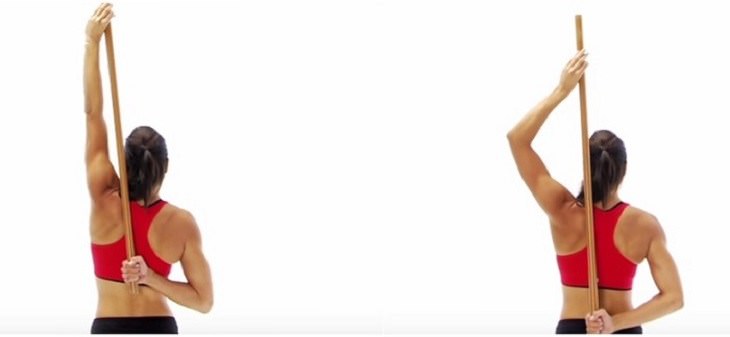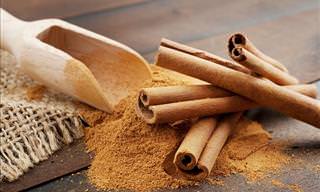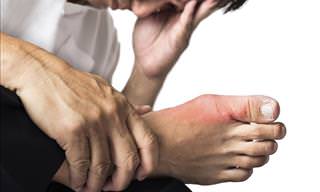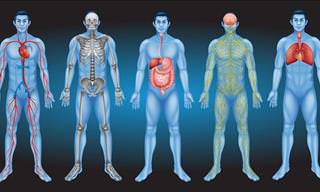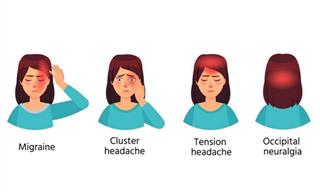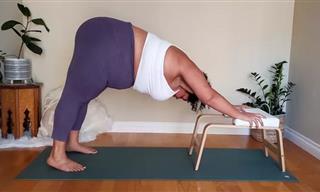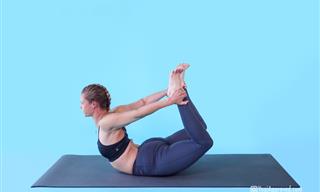1. Shoulder Tendonitis

Anyone who has to extend their shoulders throughout the day - be it by painting, typing, or cleaning - could overwork the joints and develop an associated injury. Shoulders are susceptible to tendonitis and if left untreated, the whole area may become inflamed. This can subsequently cause a tendon to rip, which is extremely painful.
In most cases, the pain is more acute when the arm is raised or when the shoulder is less active and becomes numb at night. If the tendonitis continues to develop, the arm might start making clicking sounds during sideways movements, and it can become very weak and difficult to raise above shoulder height.
Treatment
Rest, the application of ice and the use of anti-inflammatory medication are the first treatments doctors recommend for relief. If the condition persists for more than a couple of weeks, a referral for an X-ray or CT scan of the shoulder can diagnose the level of damage. In some cases, your physician will recommend a combination of physical therapy, to strengthen the healthy tendons, and steroid shots. In severe cases, an operation may be required.
Prevention
Tendonitis develops when motions are repeated too frequently and the shoulders are not allowed enough time to rest and recover between activities. Try to take short breaks when performing such activities, and adjust your sitting or standing position as often as possible. Additionally, make a habit of performing stretches for a few minutes at the beginning of your working day: Bend over forwards and try to touch your toes, or pull your knees toward your chest, then release. Repeat the exercises 10 times in three separate sets.
2. Bursitis

Bursitis is the inflammation of the bursa and often develops alongside tendonitis. The bursa is a sac of fluids that separates and prevents friction and strain between tendons, ligaments or muscles, and bones. Bursitis can form due to over-straining of the shoulder, prolonged pressure on the area, infections, or arthritis. Bursitis will first cause pain when the arms are stretched, and without proper care, the condition will worsen, particularly during rest. Another symptom of bursitis is inflammation of the general area.
Treatment
As soon as pain appears, ensure that you keep it protected even when you're sitting or sleeping, and try not to put strain on the area. Apply ice 3-4 times a day for 15 minutes. If the pain does not disappear, check with your physician to make sure you don't have tendonitis. Your doctor may recommend steroid shots and/or physical therapy.
Prevention
The best way you can prevent bursitis is by avoiding over-exertion of the area, and taking regular breaks when performing repetitive actions. When you do have to repeat activities, the cold can lead to inflammation, so try to wear warm clothes. If you’re working the joints on a cold day, then ensure you run through some warm-up exercises.
3. Osteoarthritis
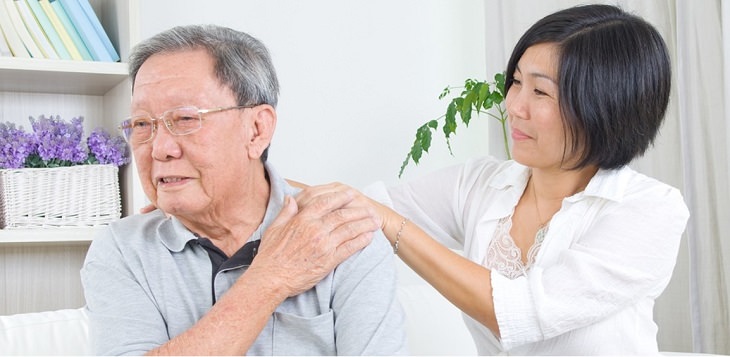
Osteoarthritis can appear when the cartilage between the bones erodes. Moving a worn or injured joint will cause immediate pain, and may be accompanied by a clicking sound, which results from the bones grinding against each other. The pain will be gradual, getting worse when strain is put on the area, and over time your range of motion may become more limited, with stiffness also developing around the affected areas. Osteoarthritis can be divided into two types - primary osteoarthritis, which is usually age-related; and secondary osteoarthritis, which is a side-effect of a preexisting condition or disease.
Treatment
While there are no cures for osteoarthritis, it can be managed through the use of painkillers and active joint preservation. Once diagnosed, your doctor will recommend rest, painkillers, anti-inflammatories, supplements, physical therapy, and even acupuncture. If these treatments fail, a surgical replacement of the joint may be needed.
Prevention
Secondary osteoarthritis can be prevented by avoiding obesity and strengthening the muscles. Exercise can help, but you should be careful not to overexert the joints, so swimming is recommended over weightlifting or running. In the workplace, make sure you don’t remain static for too long, and make sure your chair and desk are aligned correctly. Primary osteoarthritis cannot be prevented, but following the prevention methods used to combat the development of secondary osteoarthritis might help.
4. Shoulder Sprain or Dislocation
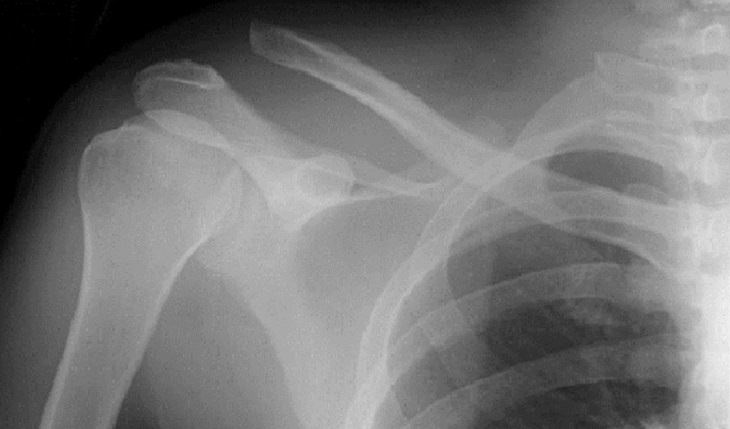
Sprains and dislocations are two separate shoulder injuries that occur in the same way. The injury is usually a direct result of an action or trauma - whether it be physical exercise, an accident, or a fall that has a sudden impact upon the shoulder, causing the bones in the joint to separate in a manner that hinders smooth motion.
There are differences between the two types of injuries though. Sprains occur when the bones separate briefly before falling back into place, while a dislocation results from the bones remaining separated after being moved apart. When the injury occurs, you will feel intense pain followed by swelling and hematomas in the shoulder and collar bone area. You might even notice a protrusion of the bone under the skin.
Treatment
In both scenarios, seek medical treatment immediately. Avoid trying to relocate the shoulder yourself – this should only be performed by a specialist to prevent further damage to the area. Your doctor will prescribe painkillers and will put your shoulder in a splint for a few days. Once the splint is removed, arrange regular check-ups to make sure the shoulder remains in place. Later on, you could require physical therapy to restore your shoulder’s range of motion, and to reduce the risk of recurring dislocations.
Prevention
Since both conditions are caused by trauma, they are more difficult to prevent, although you can try to avoid situations where the risk of shoulder injury is higher. With that in mind, if you’ve suffered from a dislocated shoulder in the past, make sure you avoid strenuous physical exercise to prevent another dislocation. Repeated dislocations can severely damage the muscles and tendons, eventually leading to a need for surgery.
5. Frozen Shoulder
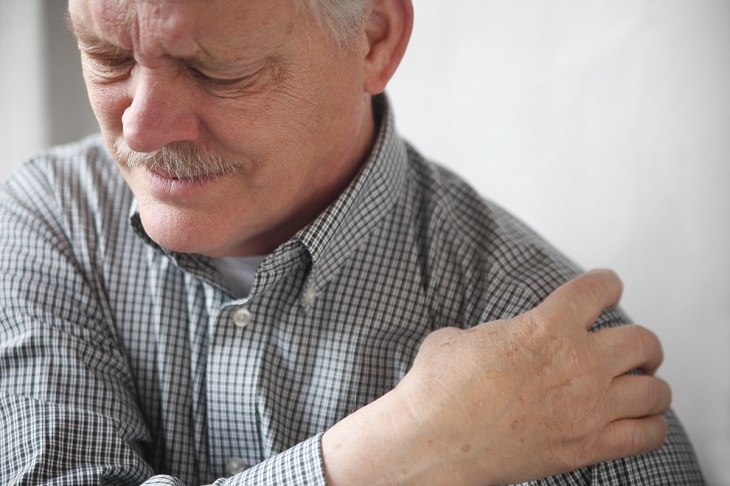
Also known as adhesive capsulitis, a 'frozen' shoulder may develop several months after a trauma-based injury, and is characterized by constant pain, even during rest. After experiencing shoulder trauma, we instinctively avoid using the area to allow it to heal. This, however, causes the area to develop scar tissue, which will limit your range of motion even after the shoulder heals.
Treatment
Following injury, it is vital that you attend regular medical check-ups and report any pain that develops after the event. Your physician can then recommend exercises that will help reduce the intensity and frequency of the pain. If left untreated, even a seemingly recovered shoulder can develop chronic pain, leading to more discomfort and the need for further medical intervention.
Prevention
It’s important to remember that a shoulder injury doesn’t mean you have to avoid using the area altogether. After an injury, talk to your doctor and get information on when you can start using your shoulders again and what movements you can safely perform. Physical therapy is also highly recommended, even if the pain does not seem significant.
Exercises That Help with Frozen Shoulder
These two easy exercises can be performed in the comfort of your home, and require nothing more than a broomstick. Their goal is to speed up the healing process and encourage you to keep the shoulder active. If you’re in considerable pain, consult with your doctor before trying the exercises.
1. Lie down on a mat or towel and hold the broomstick with both hands. Extend the arm of the sore shoulder, while keeping your other arm bent. Slowly move your hands from side to side 10 times. Rest and repeat until you have done three sets of 10.
2. Standing up, hold the broomstick behind your back with both hands, keeping the injured hand above your head and the other behind your back, near the tailbone. Slowly stretch your hand upwards until you feel the pull on the upper arm. Repeat this exercise 10 times in three consecutive sets.
6. Rotator Cuff Injuries
The rotator cuffs are four muscles located where the shoulder blades connect to the upper arm. They allow the shoulder joint to rotate. If the cuffs tear, the surrounding muscle tissues and tendons that make up the shoulder will be pulled out of place, making it very difficult for you to use the shoulder. If this happens, you will feel intense pain, and will be unable to move your arm much at all. Such injuries are usually the result of a prolonged, degenerative process, but in some cases, they can develop suddenly, as a result of overexertion. This can, for example, affect athletes who continue to exercise despite the initial onset of shoulder pain.
Treatment
As with most other shoulder injuries, you should seek medical attention as soon as possible. Your physician will likely arrange an X-ray of your shoulder, and then prescribe painkillers, anti-inflammatories and rest. With this type of injury, the healing process takes time, and in severe cases, a doctor may recommend surgery to remove the damaged tissue and attach healthy tissue in its place.
Prevention
Strengthening your shoulder muscles is key to reducing the chances of a rotator cuff injury. It is important not only to strengthen the shoulder muscles, but to also improve the flexibility of your whole body. Remember to take time to rest during repetitive exercise and avoid tasks that cause pain.
7. Pinched Rotator Cuff
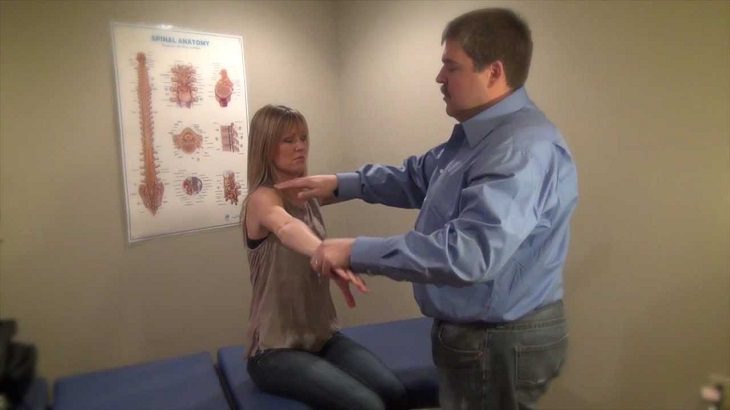
When your rotator cuff gets “pinched” between the bones of your shoulder, the result can be damaging to your muscles and tendons. This is a common injury that can result from everyday activities that require you to raise your hands above shoulder height, or when you lift weights. Symptoms include a sharp, stabbing pain when you try to raise your arm or lie on your side, as well as a sense of instability and general sensitivity in the shoulder region.
Treatment
The best form of treatment is rest, anti-inflammatory medication, painkillers, and steroid shots. You should also try to avoid moving your arms upwards or forwards when possible. Later on, the treatment will include physical therapy to help you regain flexibility and movement in the shoulder.
Prevention
Before engaging in activities that may strain the shoulders, make sure you stretch for five minutes in order to warm up the shoulder tissues. It is also helpful if you perform spinal exercises on a daily basis – lie down on your back and use pillows to prop yourself up.
Another cause of pinched cuffs is bad posture. Since many of us spend our day sitting in positions that may cause the shoulders to bend forward, remember to compensate for this when you stand and walk by keeping your chest stretched, arms pulled back and your shoulder blades steady.
 Go to BabaMail
Go to BabaMail








